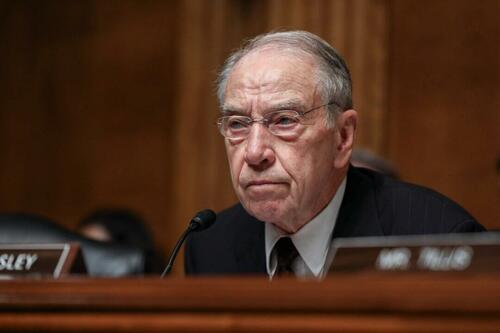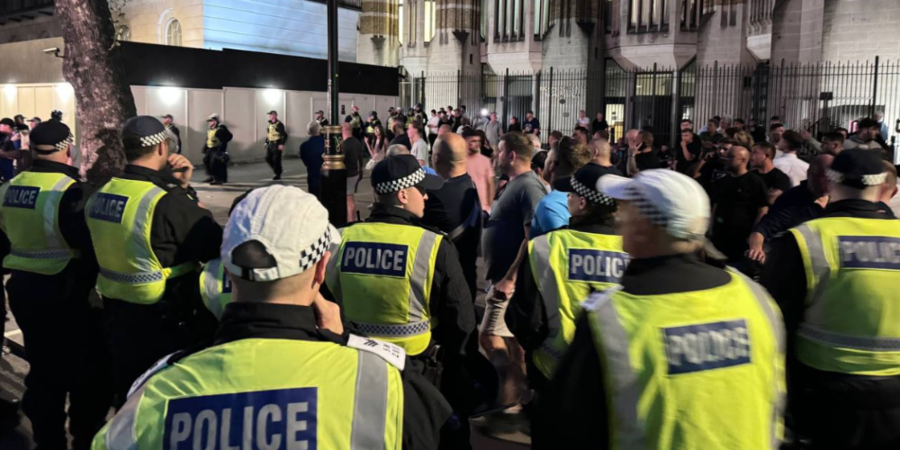Sen. Grassley Questions Immigration Parole For New Alleged Trump Assassination Plotter
Authored by Naveen Athrappully via The Epoch Times (emphasis ours),
Sen. Charles Grassley (R-Iowa) posed a series of questions to the Department of Homeland Security (DHS) seeking clarity on the recent arrest of a Pakistani national regarding his attempts to assassinate high-ranking U.S. government officials, allegedly including former President Donald Trump, in light of the fact that he was flagged on a federal watchlist and recently granted immigration parole.
The alleged Pakistani plotter, Asif Raza Merchant, 46, was apprehended on July 12, 2024, when he attempted to leave the United States. Currently in federal custody in New York, Merchant’s plot was foiled when he allegedly conspired with undercover agents, who posed as assassins, to attempt to murder high-ranking U.S. citizens.
The alleged scheme was conducted as part of a larger Iranian ploy to retaliate against the killing of General Qasem Soleimani, Attorney General Merrick B. Garland said, according to an Aug. 6 Justice Department (DOJ) statement that revealed the incident. Soleimani was taken down in 2020 during the Trump administration for aiming to blow up the U.S. Embassy in Iraq.
On Aug. 9, Grassley wrote a letter to DHS Secretary Alejandro Mayorkas asking him for more information regarding Merchant’s immigration parole status. Citing media reports, Grassley said that Merchant was interviewed by the Joint Terrorism Task Force upon his arrival in the United States on April 13 because he was flagged in the federal database as a “Lookout Qualified Person of Interest.”
Despite this, Merchant was granted Significant Public Benefit Parole on April 13 by the DHS, which he overstayed after it expired on May 11, Grassley said. He asked the DHS to provide answers to the following:
- Did the DHS grant Merchant Significant Public Benefit Parole before or after his placement on the terrorist watchlist and being listed as a “Lookout Qualified Person of Interest”?
- On what basis was Merchant granted Significant Public Benefit Parole?
- Provide the entire Alien Registration File (A-File) for Asif Raza Merchant.
- How many individuals on the Terrorist Screening Database have DHS granted parole and allowed entry into the United States?
Following Merchant’s arrest, Garland said, “The Justice Department will spare no resource to disrupt and hold accountable those who would seek to carry out Iran’s lethal plotting against American citizens and will not tolerate attempts by an authoritarian regime to target American public officials and endanger America’s national security.”
FBI Director Christopher Wray said of the incident: “This dangerous murder-for-hire plot exposed in today’s complaint allegedly was orchestrated by a Pakistani national with close ties to Iran and is straight out of the Iranian playbook.
“A foreign-directed plot to kill a public official, or any U.S. citizen, is a threat to our national security and will be met with the full might and resources of the FBI.”
Assassination Attempts on Trump
The Pakistani national’s plan to assassinate Trump has not been confirmed by federal agencies. The Epoch Times reached out to the DHS and the DOJ for comment regarding the issue. The FBI declined to comment.
According to court documents, Merchant’s plot involved “three different criminal schemes: (1) stealing documents or USB drives from a target’s home; (2) planning a protest; and (3) killing a politician or government official.”
Merchant told the confidential source, an undercover agent, that “trusted” people would be needed to conduct the killing and perform protests after the incident as a distraction, and that they would need “a woman to do ‘reconnaissance.’”
Merchant paid the agent an advance sum of $5,000 to hire hitmen and told him that the final plans would be revealed after Merchant left the country.
He was subsequently arrested on July 12, a day before Trump was shot in the ear in an assassination attempt during a rally in Butler, Pennsylvania.
“The failure of the Secret Service in Butler, Pennsylvania, is even more outrageous in light of suspected Iranian-backed assassins targeting former Trump Administration officials, including President Trump himself. That day, the threat of sniper attacks was even higher than normal,” House Permanent Select Committee on Intelligence Chairman Mike Turner (R-Ohio) said in a statement after the DOJ unsealed its charges against Merchant.
“I was previously briefed concerning the Iranian threat and the circumstances of Mr. Merchant’s arrest and questioned then-Secret Service Director Kimberly Cheatle on whether she had reviewed the intelligence concerning the Iranian threat. She confirmed to me that she read the intelligence and was aware of this Iranian murder-for-hire plot.”
Tyler Durden
Mon, 08/12/2024 – 23:25












